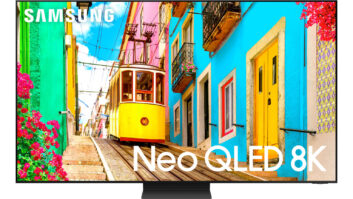Consumers’ appetite for ever-larger TV screens and Ultra HD 4K resolution is driving premium consumers back into the showrooms and retail stores of electronic systems contractors (ESCs) and A/V specialists.
Just as important, it’s driving growing demand for new component-audio solutions, encouraging people to trade up their home theater’s audio system to match the performance of their new TVs and prepare for the launch of new 4K Bluray players and settop boxes, industry executives say.
The trends are welcome news to the custom-install industry as it prepares for the CEDIA Expo, scheduled for Oct. 14-17 in Dallas.
“Ultra HD is bringing back the premium customer,” said PowerHouse executive director Dennis Holzer, as are the growing sizes of flat-panel displays. “Before there were 60- and 70-inch TVs, and no one rushed to replace a 55-inch TV, but now there are 70-, 80- and 90-inch TVs. Ten to 20 inches more gives you something to upgrade to.”
Said ProSource CEO/president David Workman, “The premium-TV customer is back in the market,” and that customer tends upgrade the rest of a home theater system, he said.
Premium-TV purchasers tend to upgrade their home theater’s audio performance simply to match that of their new 4K TV, Holzer noted. “It starts with the TV,” he said. “Customers upgrade the TV and look at the rest of the system.”
Not only can installers upgrade a home theater’s AVR and in-room speakers when customers upgrade to 4K TVs, but it’s also easy to change out the room’s in-wall or in-ceiling speakers, he said. Installers can easily upgrade 6.5-inch speakers with 8-inch models by making the wall openings larger, he explained.
“Our AVR sales are starting to pick up,” Holzer said, as are sales of in-room speakers. “Custom speakers were already up,” thanks in large part to improved sound quality that means “you lose less if you go in-wall or in-ceiling,” he said.
The era of Ultra HD TV is also inducing 4K TV owners to upgrade to the latest HDMI connectivity options in AVRs to match those of 4K TVs and of future 4K Blu-ray players and 4K settop video-streaming devices, marketers said.
They point to a need to upgrade AVRs to ones with HDMI 2.0a connections to passthrough high dynamic range (HDR) video from future 4K Blu-ray players and from set-top IP-video streamers to 4K TVs. Consumers also need AVRs with HDCP 2.2 copy protection to passthrough copy-protected 4K content from those devices to 4K TVs.
Dolby Atmos, DTS:X
So far, however, the emergence of the Dolby Atmos and DTS:X object-based surround formats on Blu-ray discs hasn’t produced a major lift in AVR sales because the technologies are still new, Workman and Holzer said. But that will change, and the technologies will encourage home theater upgrades, particularly upgrades to add in-ceiling speakers that deliver height channels.
Said GoldenEar president Sandy Gross, “Object- based systems offer real sonic improvements, so they should provide a real lift in the marketplace, especially for custom install, as the better systems basically require this.”
Holzer saw an initial boom in Atmos/DTS:X AVR sales, then a lull, likening the sales trend to a new–store grand opening. But the technologies will contribute to future growth, he said.













